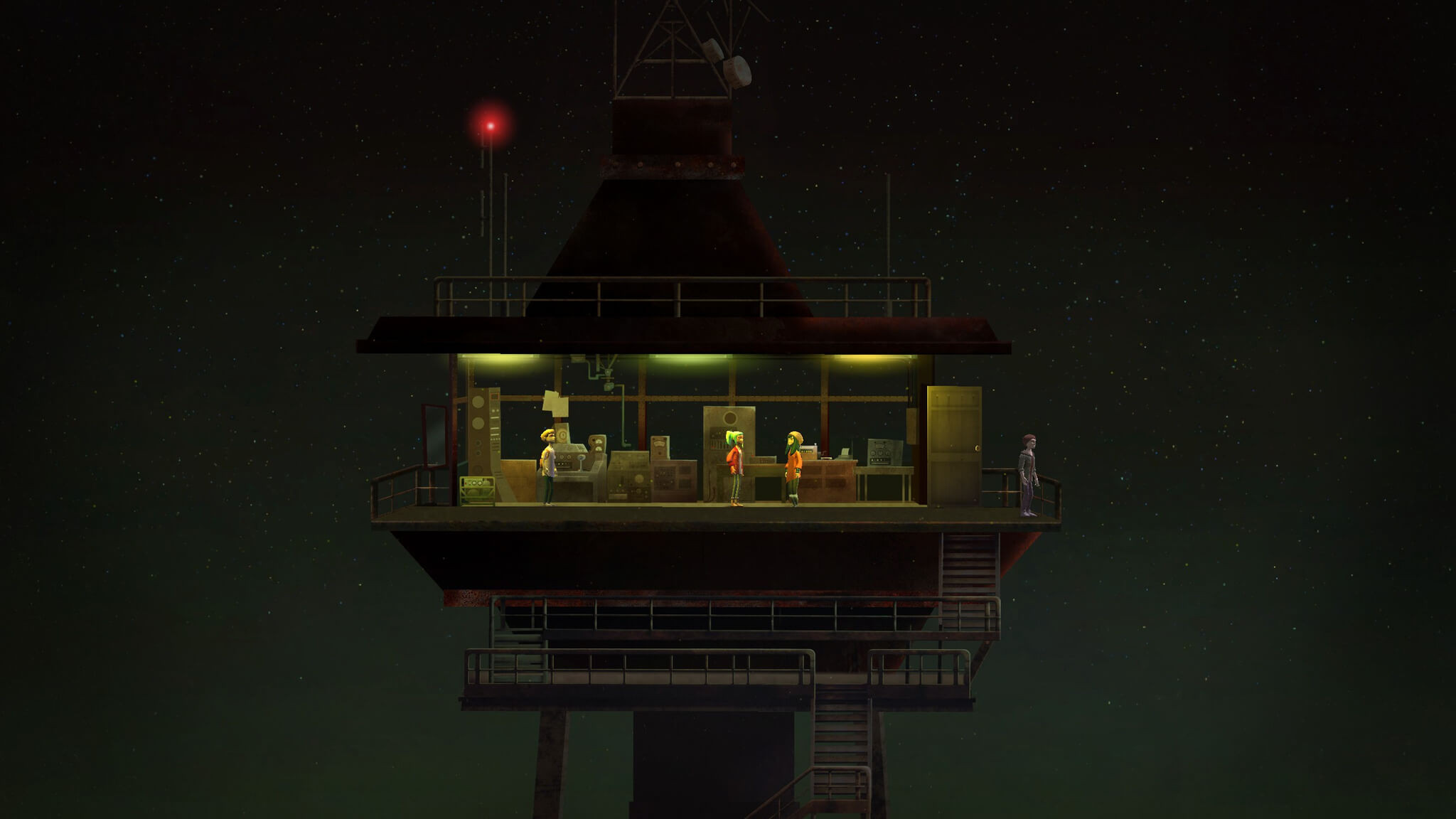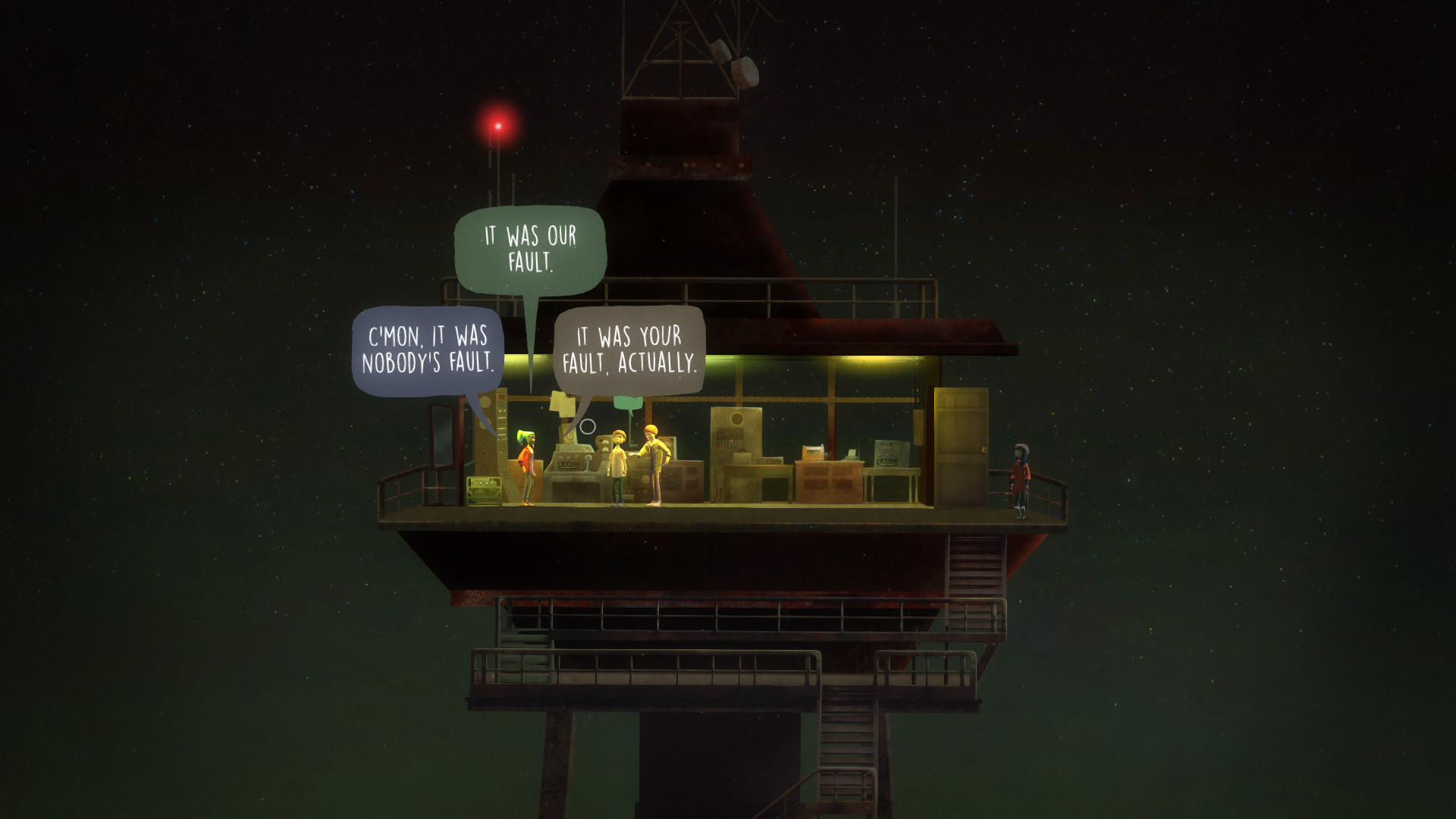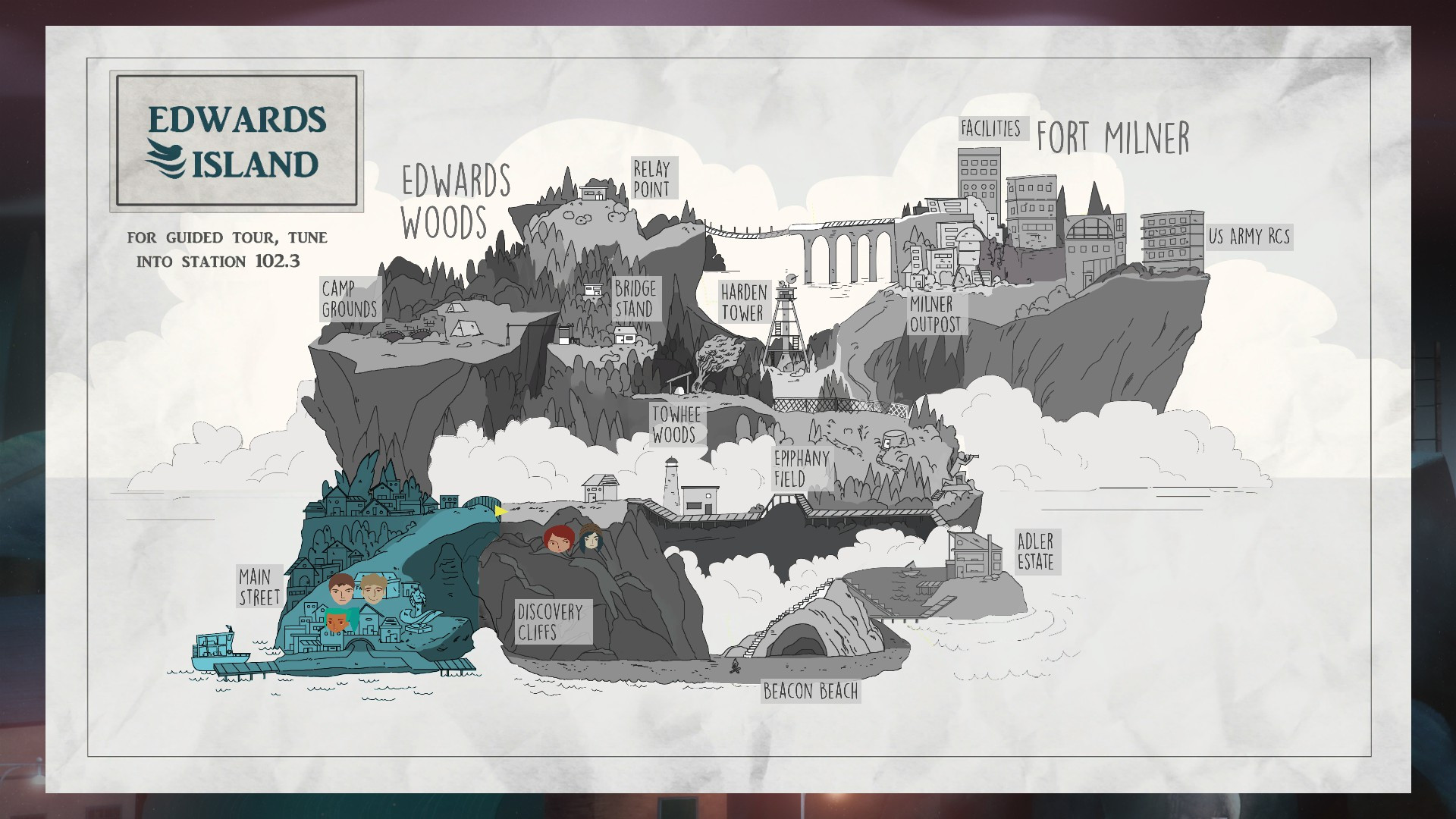
About SqncBrk
Sequence break is the act of obtaining an item out of order or performing certain action out of order. In…

… and it all just is too familiar. You’re on the ferry headed to Edwards Island. The protagonist’s name is Alex. She’s a blue-haired high-school senior. Two more characters that accompany her are Jonas, dry-witted step-brother and Ren, an easy-going goof. It’s late evening, the island’s deserted. You’re meeting two more important characters on the beach: Clarissa and Nona. The plan? Hang out around the bonfire, drink some beer, play Fuck-Marry-Kill. Finally, when the guys have had enough, it’ll be time to go take a peek at a nearby cave.
A group of teenagers on a night trip to an abandoned island, beach party and descend into darkness. Oh, you know what happens next: the obligatory scary stuff happens. Screen shakes, creepy distorted voices chant ill omens, flashes of evil red laser light illuminate the screen. Is it a horror? Undoubtedly. It’s really not that different from what you’ve seen, heard, experienced numerous times in various media.

Is it somehow different? Does it have something to pull you in? What is it? You got into this cave idly pushing thumbstick on your gamepad. As boring for a videogame as it gets, isn’t it? Toying with frequencies’ dials of your pocket radio, however cute, can’t overcome the fact that it’s just a fiddling momentary thing. No, the distinctive thing about Oxenfree is simply how it controls its flow of dialogues. It feels natural, organic: characters talk over and interrupt each other, make pronunciation errors; sometimes they stutter and traif off. How do you make sure then that the main plot-line happens? You simply insert something “as I was saying”, you check when a character leaves the audible area, you check that the dialogue ended, you add checkpoints. Simple algorithm, but that’s how people in groups actually behave. Then there’s the protagonist. Your unique blue-haired Alex will have dialogue balloons pop over her head — you’re free to choose any one you like. Including pressing no button at all and keep enigmatic silence. That’s it, that’s the whole trick. Not a whole lot of mirrors and just a tiny puff of smoke.
Meanwhile the story takes off. In a series of disturbing events you’ll get to stroll around the island and uncover what’s really happening. Your fiddling with the radio in the cavern woke up a bunch of ghosts, trapped in some kind of temporal rift. They’re “souls” of submarine passengers, which was caught in friendly fire due to a mistake. They are stuck in eternity experiencing their deaths over and over. This is why they want to possess human bodies to escape, naturally. As a result of your initial contact with them your teenager friends are spread out throughout the island. So the first thing to do is to find them. Along the way you’ll be picking up letters and notes of Maggie Adler, a late resident of the island. Her tragic past is intimately interwoven game’s story. But all that you’ll only know as a result of the journey, so time to move out!

There is a modest-sized map; you’re free to roam in any direction as soon as you’re done with prologue. Only there’s little to no point in doing so. It’s deceiving: most of the time there’s only one actual destination that would move the plot forward. Turns out the fatalist outlook on choice not only runs through the story, but is reflected in the gameplay form as well. That makes the break out of the time-loop so sudden in the second playthrough (and so, so missable obviously).
In the New Game Plus Alex can convince her past self to get Ren to cancel the Edwards Island trip, preventing the game's events from happening and preventing Alex from getting trapped in the ghost dimension. The ghosts though imply that the playable Alex isn't overwritten by the Alex who doesn't go to the Island, meaning that some form of her will remain trapped in the ghost dimension for all eternity.
Ultimately you’ll get to the point when all decisions were made and all there is to find is found. At least it feels like it. You’ve walked the way, you’ve made your choices and lived the consequences. The game doesn’t shy away from completely twisting its own time continuum in order to account for what you chose. Sacrificed one of the characters to the ghosts? Nobody except you will remember her. You fiddle with moving pieces, but finally the game ties up its loose ends. How tight will they be — that’s on you.
There are many false bottoms in this cache of secrets. You can occasionally find spots on the island where you can receive Morse code on your radio. None of the characters translates it; up to you to figure out what these transmissions mean.
Alex (and by extension the you) recalling the events of the game is a key element of the New Game Plus mode, that is the reason to start it again; that’s the way the story goes. You proceed with a touch of a button and it all just is too familiar…